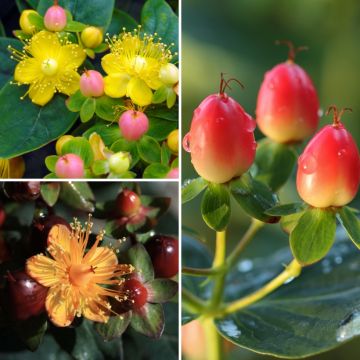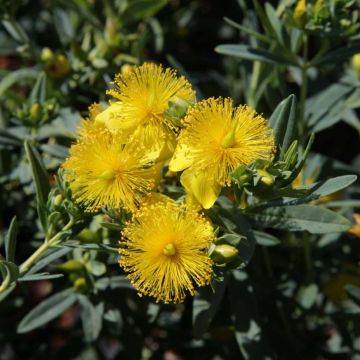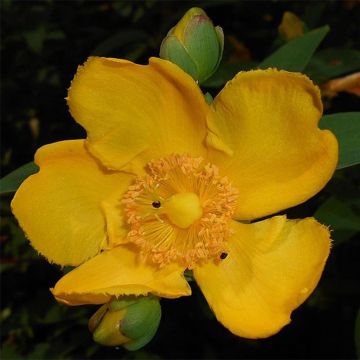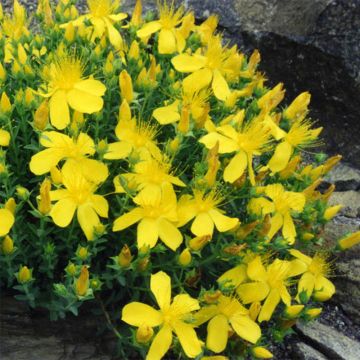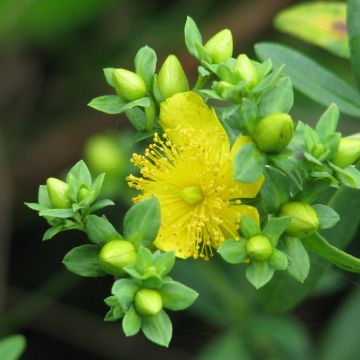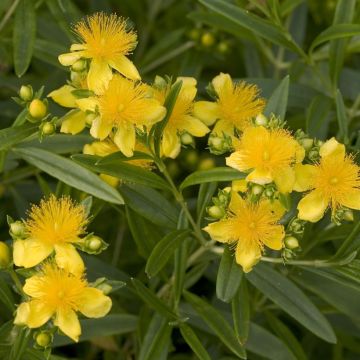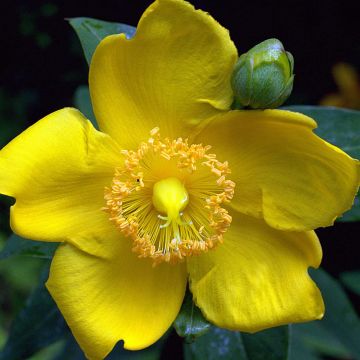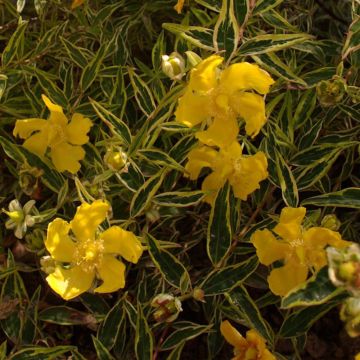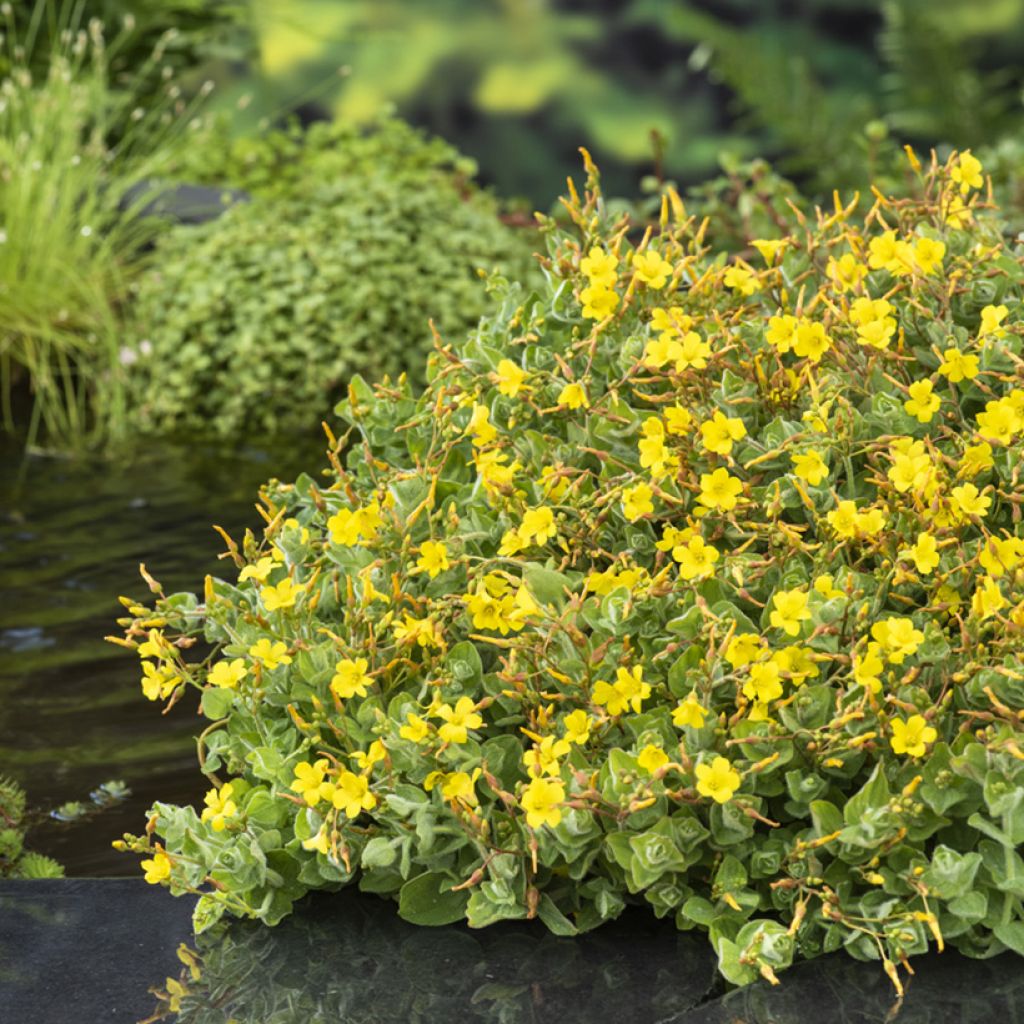

Hypericum elodes
Hypericum elodes
Hypericum elodes
Special offer!
Receive a €20 voucher for any order over €90 (excluding delivery costs, credit notes, and plastic-free options)!
1- Add your favorite plants to your cart.
2- Once you have reached €90, confirm your order (you can even choose the delivery date!).
3- As soon as your order is shipped, you will receive an email containing your voucher code, valid for 3 months (90 days).
Your voucher is unique and can only be used once, for any order with a minimum value of €20, excluding delivery costs.
Can be combined with other current offers, non-divisible and non-refundable.
Why not try an alternative variety in stock?
View all →This plant carries a 6 months recovery warranty
More information
We guarantee the quality of our plants for a full growing cycle, and will replace at our expense any plant that fails to recover under normal climatic and planting conditions.
Description
Hypericum elodes, the marsh St. John's wort, is an aquatic perennial plant used, in particular, as a ground cover for the edges and banks of water features. It can also be planted in shallow water (up to 15 cm deep). This St. John's wort forms a mat about 20 cm tall, its loose branches are adorned with small, deciduous, bluish-green leaves covered in hairs. Throughout the summer, numerous small yellow flowers appear. It thrives in full sun or partial shade in a moist to wet, non-limestone soil.
From the Hypericaceae family, Hypericum elodes is native to Western Europe. It is a typical plant of the European Atlantic climate. It grows in wet peat bogs, heathlands, and peat marshes. It differentiates itself from other St. John's worts by its hairy leaves. This aquatic perennial plant grows from a creeping stoloniferous crown. Its soft stems are rooting at the base, meaning they bear adventitious leaves and roots at each node. This allows it to form a mat adorned with small, woolly bluish-green leaves. From June to September, yellow cup-shaped flowers measuring 0.5 to 1 cm in diameter appear singly or in cymes of 3 to 10.
It is an excellent ground cover plant for dressing the banks of a stream or the edges of a pond or lake. It thrives in moist to wet soil. It is also an aquatic plant that enjoys having its feet in water, up to 15 cm deep. It is an oxygenating plant, essential for the good health of your water feature. Here are some plants for wet or aquatic areas that will complement the marsh St. John's wort beautifully: water forget-me-not with its small blue flowers, Iris sibirica Not Quite White with its large white flowers, and zebrinus zebra rush which adds height to the overall look.
Report an error about the product description
Flowering
Foliage
Plant habit
Botanical data
Hypericum
elodes
Hypericaceae
Western Europe
Other Hypericum - St.John's Wort
View all →Planting and care
Hypericum elodes is the ideal ground cover for wet banks. Plant it in full sun or partial shade in a moist to wet soil. It can also be planted in water, up to 15 cm deep. This marsh St. John's wort is found in shallow water or on the banks of water bodies. It does not tolerate limestone soils (prefers neutral to acidic soils). Do not bury the root ball too deep when planting. The plant is hardy down to -7, or even -11°C. It is resistant to diseases, tolerates air pollution and a small amount of sea breeze.
Remove faded flowers as they appear. In March, cut back the stems to 5 cm above the ground and remove any wilted leaves.
Planting period
Intended location
Care
This item has not been reviewed yet - be the first to leave a review about it.
Haven't found what you were looking for?
Hardiness is the lowest winter temperature a plant can endure without suffering serious damage or even dying. However, hardiness is affected by location (a sheltered area, such as a patio), protection (winter cover) and soil type (hardiness is improved by well-drained soil).

Photo Sharing Terms & Conditions
In order to encourage gardeners to interact and share their experiences, Promesse de fleurs offers various media enabling content to be uploaded onto its Site - in particular via the ‘Photo sharing’ module.
The User agrees to refrain from:
- Posting any content that is illegal, prejudicial, insulting, racist, inciteful to hatred, revisionist, contrary to public decency, that infringes on privacy or on the privacy rights of third parties, in particular the publicity rights of persons and goods, intellectual property rights, or the right to privacy.
- Submitting content on behalf of a third party;
- Impersonate the identity of a third party and/or publish any personal information about a third party;
In general, the User undertakes to refrain from any unethical behaviour.
All Content (in particular text, comments, files, images, photos, videos, creative works, etc.), which may be subject to property or intellectual property rights, image or other private rights, shall remain the property of the User, subject to the limited rights granted by the terms of the licence granted by Promesse de fleurs as stated below. Users are at liberty to publish or not to publish such Content on the Site, notably via the ‘Photo Sharing’ facility, and accept that this Content shall be made public and freely accessible, notably on the Internet.
Users further acknowledge, undertake to have ,and guarantee that they hold all necessary rights and permissions to publish such material on the Site, in particular with regard to the legislation in force pertaining to any privacy, property, intellectual property, image, or contractual rights, or rights of any other nature. By publishing such Content on the Site, Users acknowledge accepting full liability as publishers of the Content within the meaning of the law, and grant Promesse de fleurs, free of charge, an inclusive, worldwide licence for the said Content for the entire duration of its publication, including all reproduction, representation, up/downloading, displaying, performing, transmission, and storage rights.
Users also grant permission for their name to be linked to the Content and accept that this link may not always be made available.
By engaging in posting material, Users consent to their Content becoming automatically accessible on the Internet, in particular on other sites and/or blogs and/or web pages of the Promesse de fleurs site, including in particular social pages and the Promesse de fleurs catalogue.
Users may secure the removal of entrusted content free of charge by issuing a simple request via our contact form.
The flowering period indicated on our website applies to countries and regions located in USDA zone 8 (France, the United Kingdom, Ireland, the Netherlands, etc.)
It will vary according to where you live:
- In zones 9 to 10 (Italy, Spain, Greece, etc.), flowering will occur about 2 to 4 weeks earlier.
- In zones 6 to 7 (Germany, Poland, Slovenia, and lower mountainous regions), flowering will be delayed by 2 to 3 weeks.
- In zone 5 (Central Europe, Scandinavia), blooming will be delayed by 3 to 5 weeks.
In temperate climates, pruning of spring-flowering shrubs (forsythia, spireas, etc.) should be done just after flowering.
Pruning of summer-flowering shrubs (Indian Lilac, Perovskia, etc.) can be done in winter or spring.
In cold regions as well as with frost-sensitive plants, avoid pruning too early when severe frosts may still occur.
The planting period indicated on our website applies to countries and regions located in USDA zone 8 (France, United Kingdom, Ireland, Netherlands).
It will vary according to where you live:
- In Mediterranean zones (Marseille, Madrid, Milan, etc.), autumn and winter are the best planting periods.
- In continental zones (Strasbourg, Munich, Vienna, etc.), delay planting by 2 to 3 weeks in spring and bring it forward by 2 to 4 weeks in autumn.
- In mountainous regions (the Alps, Pyrenees, Carpathians, etc.), it is best to plant in late spring (May-June) or late summer (August-September).
The harvesting period indicated on our website applies to countries and regions in USDA zone 8 (France, England, Ireland, the Netherlands).
In colder areas (Scandinavia, Poland, Austria...) fruit and vegetable harvests are likely to be delayed by 3-4 weeks.
In warmer areas (Italy, Spain, Greece, etc.), harvesting will probably take place earlier, depending on weather conditions.
The sowing periods indicated on our website apply to countries and regions within USDA Zone 8 (France, UK, Ireland, Netherlands).
In colder areas (Scandinavia, Poland, Austria...), delay any outdoor sowing by 3-4 weeks, or sow under glass.
In warmer climes (Italy, Spain, Greece, etc.), bring outdoor sowing forward by a few weeks.






























